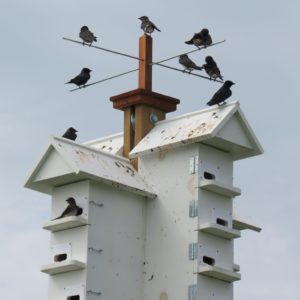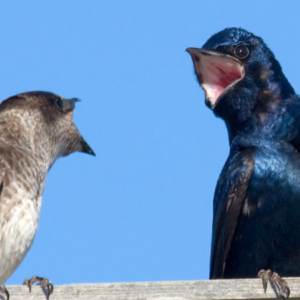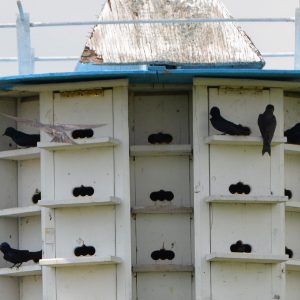Purple Martins Sporting New Backpacks

Megan McIntosh, Purple Martin Project Coordinator
In early July, Nature Canada went out in the field to study a beloved species, the Purple Martin! The Purple Martin is the largest species of swallow in North America and is an aerial insectivore; simply meaning they feed on flying insects. You will find Purple Martins nesting together as they are a colonial species and they are often spotted in open areas, usually near water.
In Canada, the Purple Martin population is in serious trouble. Purple Martins, as well as other aerial insectivores, are declining more rapidly than any other group of birds in Canada. Purple Martins could experience any number of threats between their breeding grounds in North America and over-wintering habitat in South America, which is why it is important that we study their movements and behavior through migration tracking. Local threats might include use of pesticides, adverse weather impacts of climate change, loss of foraging habitat, competition from other non-native bird species, or increased predation.
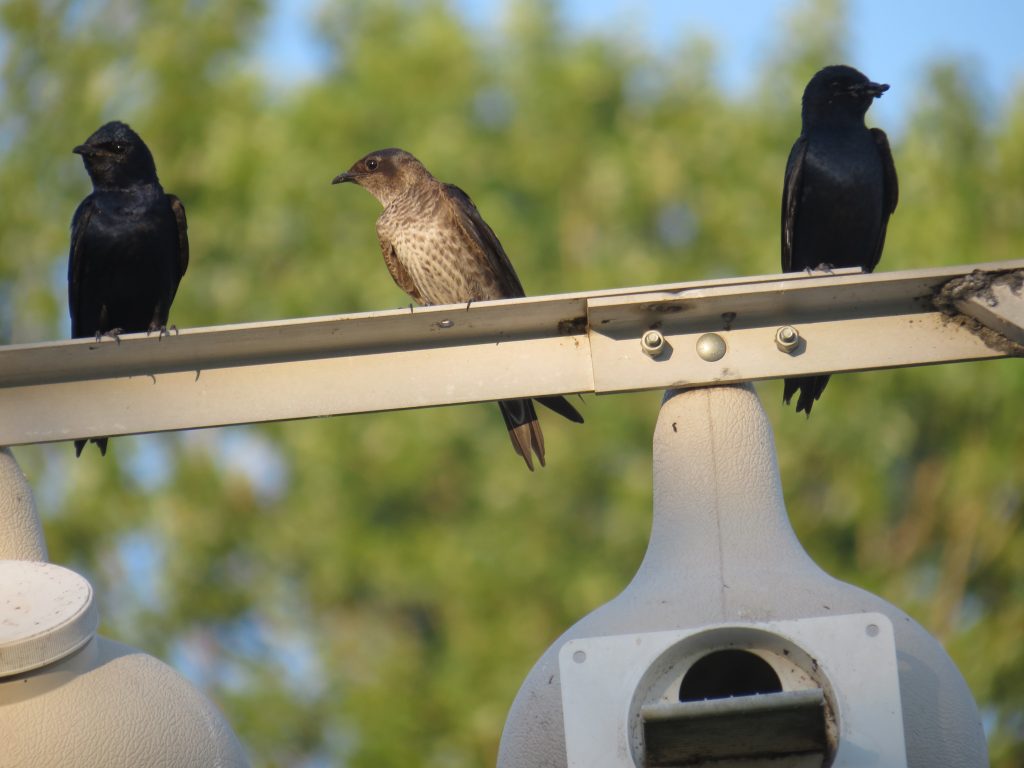
Purple Martins by Marine Morel
In order to help this species, we have developed the Purple Martin Project. The Purple Martin Project began in 2014 as part of an international initiative to help research and recover populations of declining songbird species. Nature Canada has been working with Dr. Kevin Fraser at Manitoba University to study the migration of Purple Martin’s using small tracking devices.
This July marked our fourth year conducting fieldwork to track Purple Martins. In the past, we have used GPS and geolocator technologies as part of a continental initiative to study their migratory journeys. This year, we are using the Motus Wildlife Tracking System (motus.org), a program of our partners at Birds Studies Canada. The Motus system is make up of a network of more than 300 radio telemetry towers in the Americas used to track the movements of small organisms throughout terrestrial environments.
Staff of Nature Canada and Dr. Kevin Fraser went to three sites along the Great Lakes shorelines to deploy 56 Motus nanotags on Purple Martin Families in Ontario. Similar to GPS and geolocator devices, the birds wear the nanotags (radio-tracking device) like a small backpack. Each nanotag is programed to emit a unique radio signal every 10 seconds which can be detected up to 15km away from Motus towers or receiving stations. Each time a tagged bird comes within contact of a receiver, it records the signal to document their comings and goings.
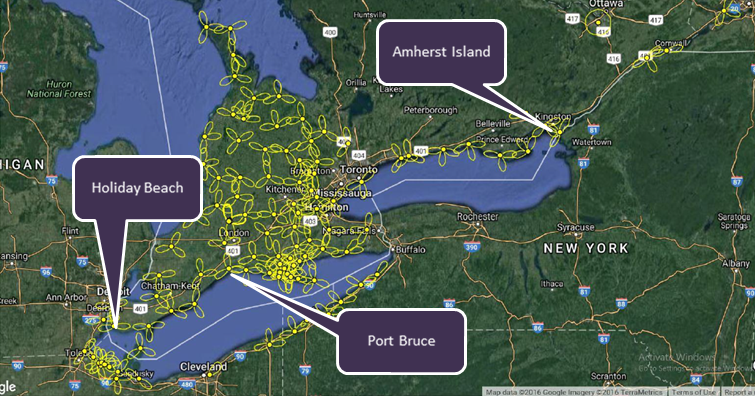
Map of Motus coverage and field site locations for 2017.
The nanotags weight just 0.67g and they do not need to be recovered in order to accesses the data. This will be the first time that Purple Martins are tracked using Motus technology. We hope to gain a lot of new information about their daily local movements through important habitats they use to forage and roosts, as well as associated threats and the timing of those movements.
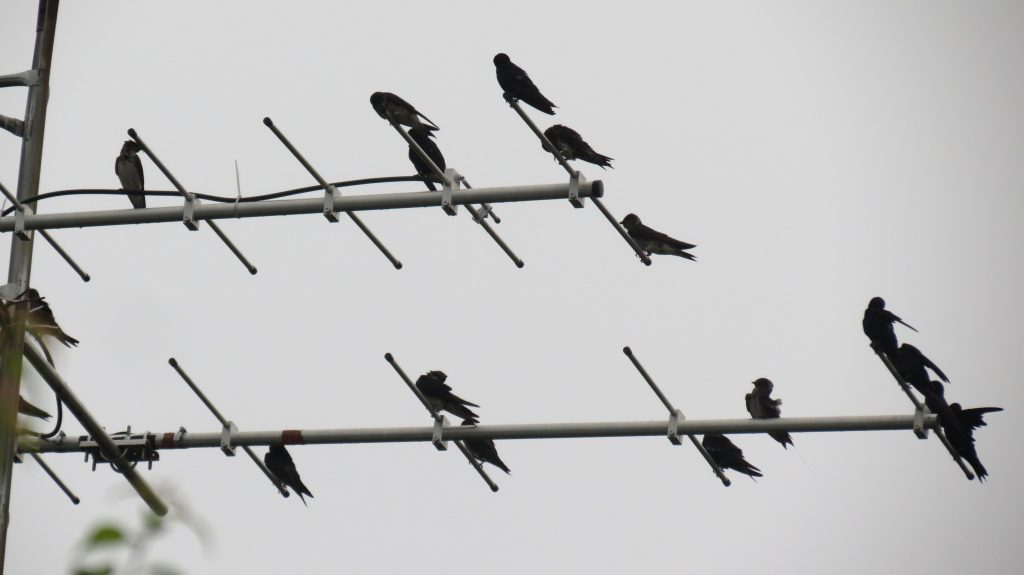
Purple Martins (some of which are tagged with nanotag tracking devices) perch on Motus tower at field site near Port Bruce. Photo by Marine Morel
What Can You Do
If you want to help the Purple Martins, there are a few things you can do! Consider volunteering at Nature Canada and assisting us with various tasks within the Purple Martin Project. Want to do more? You can donate to help us protect not only the Purple Martin but other aerial insectivores! Or you can have Purple Martins make their home on your lot! Become a Purple Martin Landlord and contact mmacintosh@naturecanada.ca on information on how to become one today.
Stay tuned! Next month we are writing a blog on the work we are currently doing to help other aerial insectivores like the Bank Swallow!
Thank you to our partners, volunteers, and site collaborators who made this work possible. Special thank you to Ron Kingswood, the Kingston Field Naturalists, Holiday Beach Migration Observatory, Bird Studies Canada, Ontario Purple Martin Association, the Walpole Island Purple Martin Project, Avian Behaviour and Conservation Lab at the University of Manitoba, the Innis Point Bird Observatory, York University, and Mitchell’s Bay Area Association. Funding is provided by Environment and Climate Change Canada, and Purple Martin houses on Amherst Island was funded by the TD Friends for the Environment Foundation.

